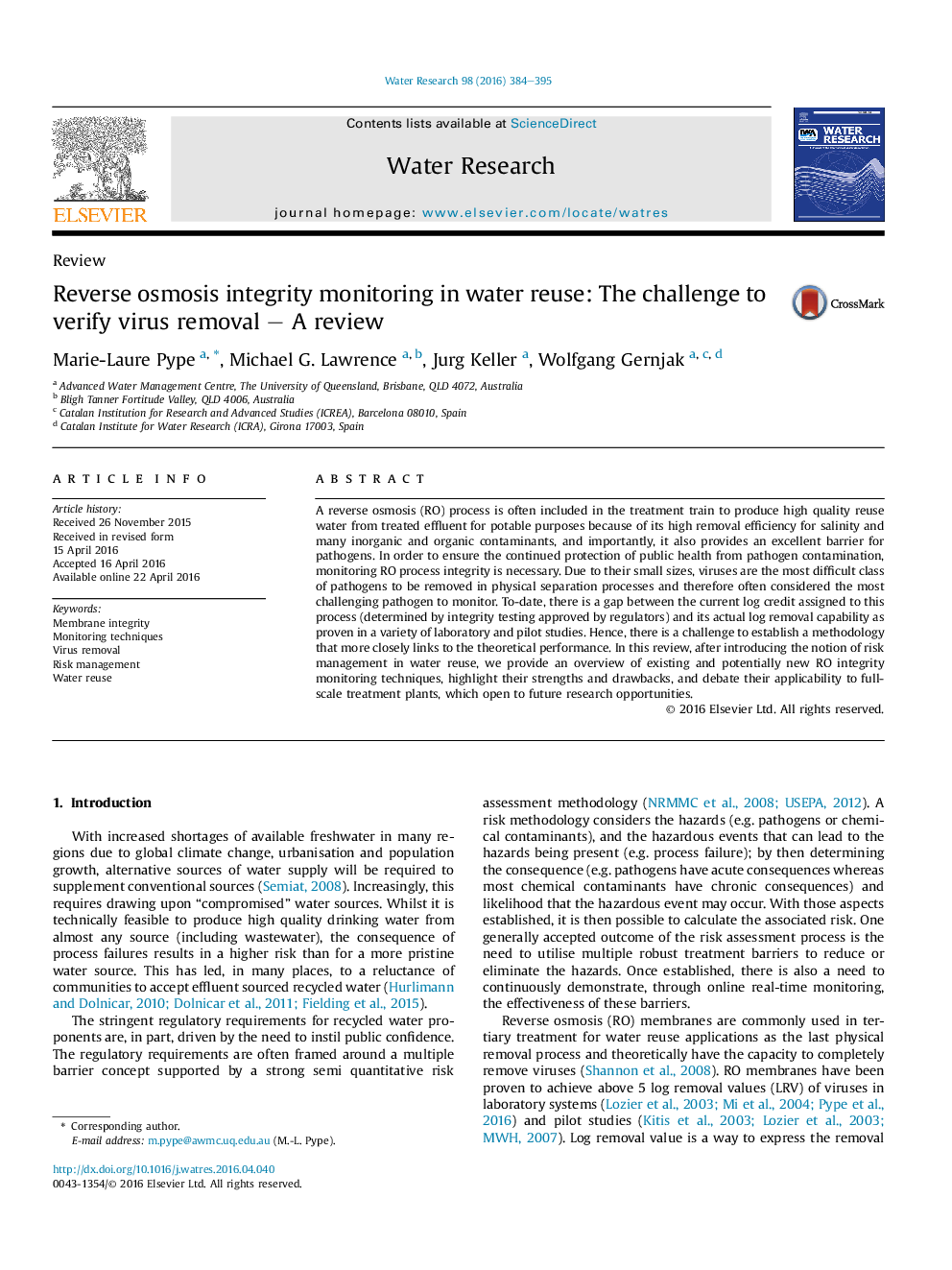| Article ID | Journal | Published Year | Pages | File Type |
|---|---|---|---|---|
| 4480963 | Water Research | 2016 | 12 Pages |
•Current continuous monitoring techniques accredit RO processes for low log removal.•Establishing a methodology linking theoretical and real performance is challenging.•Existing and potentially new RO integrity monitoring techniques are reviewed.•The application of new monitoring techniques at full-scale is discussed.
A reverse osmosis (RO) process is often included in the treatment train to produce high quality reuse water from treated effluent for potable purposes because of its high removal efficiency for salinity and many inorganic and organic contaminants, and importantly, it also provides an excellent barrier for pathogens. In order to ensure the continued protection of public health from pathogen contamination, monitoring RO process integrity is necessary. Due to their small sizes, viruses are the most difficult class of pathogens to be removed in physical separation processes and therefore often considered the most challenging pathogen to monitor. To-date, there is a gap between the current log credit assigned to this process (determined by integrity testing approved by regulators) and its actual log removal capability as proven in a variety of laboratory and pilot studies. Hence, there is a challenge to establish a methodology that more closely links to the theoretical performance. In this review, after introducing the notion of risk management in water reuse, we provide an overview of existing and potentially new RO integrity monitoring techniques, highlight their strengths and drawbacks, and debate their applicability to full-scale treatment plants, which open to future research opportunities.
Graphical abstractFigure optionsDownload full-size imageDownload high-quality image (87 K)Download as PowerPoint slide
